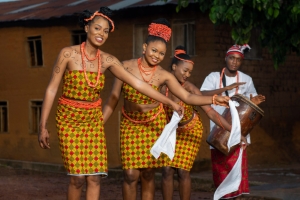Traveling through Eastern and Southern Africa offers a rich cultural experience, but managing your finances can be tricky if you’re not familiar with the local currencies and exchange rates. In this guide, we’ll take you through the currencies used in key destinations across the region—Kenya, Madagascar, South Africa, Zimbabwe, Uganda, Botswana, Namibia, Tanzania, and Zambia—and offer budgeting tips to help you manage your money effectively while on the move.
1. Currency Overview in Eastern & Southern Africa
Here’s a breakdown of the currencies in the key countries you may visit across Eastern and Southern Africa:
- Kenya: Kenyan Shilling (KES)
- Madagascar: Malagasy Ariary (MGA)
- South Africa: South African Rand (ZAR)
- Zimbabwe: Zimbabwe Gold (ZiG)
- Uganda: Ugandan Shilling (UGX)
- Botswana: Botswana Pula (BWP)
- Namibia: Namibian Dollar (NAD)
- Tanzania: Tanzanian Shilling (TZS)
- Zambia: Zambian Kwacha (ZMW)
Exchange Rates & How to Get Local Currency
Exchange rates can fluctuate, so it’s essential to keep an eye on the current rates before you travel. A few tips to manage currency exchange:
- Currency Exchange: Use reputable exchange services at the airport, or ideally, exchange money at local banks in major cities. Avoid exchanging money with street vendors as the rates may be unfavorable and there are risks involved.
- ATMs and Cards: Most major cities in these countries will have ATMs where you can withdraw local currency. Be aware of fees from your bank for foreign withdrawals, and ensure your debit or credit card works internationally.
- Traveler’s Cheques: These are still useful in certain locations but are less widely accepted than ATMs or local cash.
2. Budgeting for Activities and Expenses
When traveling through different countries, it’s essential to budget wisely for various activities. Each country in Eastern and Southern Africa offers diverse experiences, from safaris to cultural tours, and the cost of living can vary significantly.
Kenya (KES)
- Currency Tip: The Kenyan Shilling (KES) is stable, but the cost of tourism can vary greatly depending on whether you are in Nairobi or visiting national parks like the Maasai Mara.
- What to Budget: Expect to pay around 2000 KES for budget accommodations, 5000-10,000 KES for mid-range accommodations, and 20,000+ KES for luxury stays. Meals typically range from 500 KES in local eateries to over 2000 KES at upscale restaurants.
Madagascar (MGA)
- Currency Tip: The Malagasy Ariary (MGA) is a non-convertible currency, which can make exchange rates fluctuate dramatically. Always check the current rates before you exchange.
- What to Budget: Madagascar is generally affordable for travelers. Budget accommodations can start as low as 20,000 MGA per night, while mid-range options range between 50,000-100,000 MGA. Meals range from 5,000 MGA in local spots to 20,000 MGA in nicer restaurants.
South Africa (ZAR)
- Currency Tip: The South African Rand (ZAR) is widely used and stable. Currency exchanges are available in most cities, and ATMs are common.
- What to Budget: South Africa offers a range of prices. Budget accommodations can be as low as 250 ZAR per night, mid-range options around 800-1500 ZAR, and luxury hotels can exceed 5000 ZAR. Meals can cost anywhere from 100 ZAR to 400 ZAR for a decent meal.
Zimbabwe (ZiG)
- Currency Tip: Zimbabwe currently uses ZiG (Zimbabwe Gold), which can fluctuate in value, so always check the exchange rates and be aware of the value changes.
- What to Budget: Zimbabwe’s tourism prices are relatively affordable, but the local inflation rate means that prices can vary from one region to another. A budget accommodation may start from 20 USD (roughly 20 ZiG), and meals typically cost around 500-1000 ZiG for a meal at a local restaurant.
Uganda (UGX)
- Currency Tip: The Ugandan Shilling (UGX) is fairly stable. It’s wise to carry a mix of cash and cards as some places may not accept cards.
- What to Budget: Budget options are available with accommodations starting from 50,000 UGX. Mid-range hotels can cost around 150,000-300,000 UGX per night. Meals cost between 10,000-30,000 UGX at local spots.
Botswana (BWP)
- Currency Tip: The Botswana Pula (BWP) is one of the stronger currencies in Africa. Credit cards are accepted in most major areas, but always have local currency when visiting remote areas.
- What to Budget: Budget accommodations range from 500-1000 BWP per night, with mid-range accommodations starting from 1200 BWP. Meals generally cost between 50-150 BWP in local restaurants.
Namibia (NAD)
- Currency Tip: The Namibian Dollar (NAD) is pegged at par with the South African Rand (ZAR), and both currencies are used interchangeably.
- What to Budget: For a budget trip, expect to pay 500 NAD for basic accommodations. Mid-range options start at around 1000 NAD, and meals generally cost between 150-400 NAD depending on where you eat.
Tanzania (TZS)
- Currency Tip: The Tanzanian Shilling (TZS) is the main currency, though US dollars are often accepted for larger transactions.
- What to Budget: Budget accommodation in Tanzania starts at around 40,000 TZS per night, and mid-range hotels typically cost between 100,000-250,000 TZS. Expect to spend between 10,000-30,000 TZS for a meal in a local restaurant.
Zambia (ZMW)
- Currency Tip: The Zambian Kwacha (ZMW) can fluctuate, so it’s important to monitor exchange rates before traveling.
- What to Budget: Zambia is affordable for travelers, with basic accommodations starting from 200 ZMW per night. Mid-range hotels range from 500-1500 ZMW, and meals cost between 50-150 ZMW.
3. Practical Money Management Tips for Travelers
When traveling in Eastern and Southern Africa, it’s crucial to manage your money wisely to avoid running into trouble. Here are some practical tips for travelers:
Carry Cash but Use Cards Wisely
In most parts of Eastern and Southern Africa, cash is king. Always carry a combination of local currency and US dollars for emergencies. While cards are accepted in larger cities, rural areas may only accept cash.
Know Exchange Rates
Exchange rates can fluctuate rapidly in countries like Zimbabwe. Always check for up-to-date exchange rates using an app or online before you exchange money or make large purchases.
Plan Your Budget in Advance
Make a daily budget based on the country you’re visiting. Accommodations, meals, transportation, and activities can all vary significantly depending on the country, so being prepared will help you stay within your budget.
Avoid Over-Spending
It’s easy to get caught up in the excitement of exploring new places. Stick to your budget for food, souvenirs, and activities. Look for affordable yet authentic experiences that allow you to enjoy the culture without overspending.
Conclusion: Budgeting for Your African Adventure
Traveling through Eastern and Southern Africa can be an affordable and unforgettable experience if you manage your money effectively. With a little planning, you’ll be able to enjoy the incredible food, wildlife, and cultures these regions have to offer, while keeping your finances in check. Whether you’re strolling through markets in Kenya, going on a safari in Botswana, or visiting Victoria Falls in Zambia, understanding the currencies and budgeting for your activities is the key to a successful journey.
Stay prepared, stay informed, and most importantly, enjoy the adventure!








